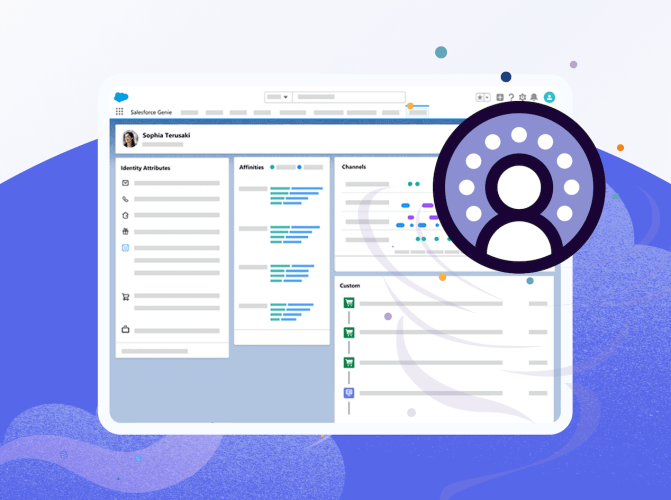Asset Service Management: Why It’s So Important To Field Service

No matter your industry, here’s how field service management and outcome-based service contracts can help make sure your equipment is always in top condition.

Chad Barbour
Think about what could happen if you don’t have a good handle on your field service assets. Without a proper process in place, you risk operational inefficiencies, increased costs, and a decline in overall performance. You might even jeopardize the safety of your employees, contractors, and customers. Enter asset service management, the process of effectively managing and maintaining physical assets in field service.
With the best field service management software with AI and the right outcome-based service contracts, you’re set up for successful asset service management. Here’s what you need to know — no matter your industry.
What you’ll learn:
Supercharge field service with AI
Learn what high-performing service teams are doing with AI and automation to boost field service efficiency.



What is asset service management?
First, let’s dig into the purpose of field service asset management. At a high level, it’s your system to manage physical assets, such as equipment, machinery, vehicles, and tools that need maintenance, repairs, and inspections. The goal is to maximize the performance, longevity, efficiency, and uptime of these assets while minimizing costs for your organization. This is where your field service management comes in to help you take an organized, efficient, and proactive approach to asset service management.
What are the benefits of asset service management?
Your field service management streamlines asset service management by providing tools for tracking, maintenance planning, analytics, and more. Here’s how it can help you effectively manage your assets and some benefits you’ll achieve:
- Enhanced asset visibility and tracking: Technologies like IoT, RFID tags, barcodes, and GPS help you monitor the location and status of your assets in real time by communicating to your field service management. You don’t waste time searching for assets so you’re able to be more efficient and plan better.
- Optimized maintenance strategies: Goodbye reactive, hello proactive service! Scheduling regular preventive maintenance based on usage, performance data, and manufacturer recommendations reduces the need for emergency repairs (break-fix) and extends asset life.
- Critical condition monitoring: Catch problems before they happen with AI-powered sensors that continuously track and report temperature, pressure, vibration, and other indicators back to your field service management.
- Empowered field service techs: Your mobile field service management app provides your field service teams with real-time access to work orders, asset service histories, and updated info on the go. This improves their productivity and enables them to consistently deliver high-quality service from anywhere.
- Efficient inventory management: Keeping track of spare parts and monitoring inventory is critical for timely repairs and maintenance. AI can help predict demand and stock levels can be reordered with automation right from your field service management solution. This saves your business time and money.
- Data-driven decision-making: Analyzing performance data, maintenance history, and key performance indicators (KPIs) helps you plan better for the future. You can make more informed decisions about asset maintenance strategies, replacement planning, and overall optimization.
- Compliance with safety requirements: Let automation in your field service management take care of scheduling inspections, tracking maintenance activities, and ensuring your assets meet regulatory requirements. This helps to reduce the risk of legal issues, improves safety, and frees up your team to focus on more complex work.
- Extended asset lifecycle: By implementing preventive maintenance strategies, field service asset management helps extend asset life. This reduces the frequency of asset replacements, leading to long-term cost savings and improved return on investment.
- Streamlined communication and collaboration: Your field service management software facilitates communication and collaboration among your entire team and other stakeholders. Centralized real-time updates, shared insights, and collaborative tools enhance coordination and reduce service delays.
- Increased customer satisfaction: Last, but not least, the combination of reduced downtime, efficient service delivery, and proactive maintenance can lead to higher customer satisfaction scores. Remember: happy customers are more likely to be loyal to your business.
What industries use asset service management?
Mission-critical industries such as manufacturing, communications, healthcare, and the public sector use field service asset management. If your business is in one of these industries, take a look at how you can use just some of its capabilities and how you’ll benefit.
- Manufacturing: Manufacturers use preventive maintenance scheduling to reduce maintenance costs, extend the lifespan of their equipment and machinery, and minimize downtime. Our research found that 71% of manufacturers rated asset uptime as the most important KPI.
- Communications: Telcos rely on real-time tracking and condition monitoring for their network infrastructure, towers, and equipment to help keep communication services uninterrupted.
- Healthcare: Medical providers use asset service management to meet regulatory compliance, forecast equipment usage and costs, and keep critical medical devices in optimal condition with preventive maintenance.
- Public sector: The government depends on regular maintenance activities for public infrastructure assets like roads, bridges, and buildings to help ensure the safety and reliability of public services.
Other industries that rely on effective asset service management for field service include utilities, construction, oil and gas, and retail, just to name a few.
What is an outcome-based service contract?
In addition to the best field service management, it’s important that you have the right service provider to help make sure your assets are always in excellent operating condition. Let’s look at how an outcome-based service contract, also known as a performance-based or results-based contract, can help.
In an outcome-based service contract, the customer and service provider mutually agree on specific measurable and attainable results. It’s a partnership. Customers get the outcomes they want. Service providers know exactly what is expected of them. They’re also compensated based on the results delivered rather than just getting paid for the services delivered.
The success of an outcome-based service contract relies on a complete understanding of the customer’s needs, effective communication between parties, and a commitment to collaboration. Legal and compliance considerations must be taken into account when writing these contracts to ensure they’re enforceable and aligned with applicable regulations.
Here are five important elements to include in an outcome-based service contract:
- Clearly defined results: First things first: agree on what success looks like for everyone. Then specify the desired outcomes in clear and measurable terms. This could include meeting KPIs, service levels, or specific goals (i.e., extending asset life by 1 year) the service provider is expected to deliver on.
- Performance metrics and measurement: Clearly outline the metrics, such as reliability (uptime) and cost-efficiency, that will be used to measure the achievement of results. Include the methodology for tracking performance and the frequency of reporting (i.e., every two weeks).
- Risk and reward: An outcome-based service contract is a partnership. That includes agreeing on risks and rewards, such as penalties for failing to meet performance targets or financial incentives for exceeding them. A well-structured risk-reward system helps align the interests of both parties.
- Flexibility and adaptability: Let’s face it. Things rarely stay the same. Build flexibility into the contract to accommodate changes in business conditions, technology, and other factors, like severe weather, that may impact service delivery. This will help the contract to remain relevant and effective over time, no matter what happens.
- Continuous improvement: Include provisions for continuous improvement throughout the contract duration. Regularly review and assess the performance of service and make adjustments as necessary to optimize outcomes. This fosters a collaborative relationship.
Remember: an outcome-based service contract is designed to help to ensure success for both the customer and service provider. It should be a win-win for both parties.
What does the future of field service management look like [Hint: more AI]
These days generative AI is making a huge impact on service operations – and field service asset management is no exception. Assets produce a huge amount of data. AI can track and analyze this data, use it to make predictions, and offer suggestions — helping companies to scale and prioritize.
Here are a few exciting practical applications to look forward to:
- Vision prediction: Computer vision – the ability of computers to ‘see’ and understand images – has the potential to improve customer self-service for field assets. For example, a customer could upload an image of a thermostat that they are connecting to wiring. AI could then analyze the image, and let the customer know if they have correctly connected the wires – or, if not, what to do instead.
- Service forecasting: Given enough data, AI can recognize patterns and forecast the future. This means that AI can not only detect when an asset needs servicing, but even forecast when it is likely to fail – and recommend preventive maintenance, or replacement so that failure never occurs.
- Assistance to the tech: Let’s say a mobile worker arrives on a site visit and encounters a problem they haven’t experienced before. The tech may message a colleague for help, or embark on a lengthy search through knowledge base articles – or, if a knowledge base article on this issue does not exist, past service records. This all takes time. Soon thanks to the power of generative AI, the field service tech will be able to simply ask their device about how to solve this particular issue, and generative AI will summarize what’s known – eliminating the time spent on the search.
Advancements in AI will continue to significantly speed up field service asset management, making it easier to do and more effective.
How to get started with field service asset management
If you’re new to field service asset management, or want to uplevel your existing system, ask yourself these four questions to get started:
- Where am I now with asset service management? Assess your current assets and maintenance processes. Determine pain points, inefficiencies, and opportunities for improvement, like having data for better decision-making in real time.
- What do I want to accomplish? Clearly define your objectives and goals. Understand exactly what you want to achieve, like decreasing downtime or improving equipment efficiency. Then create KPIs to measure your success.
- What do I need for field service management? Choose a solution that aligns with your organization’s goals and can scale easily as needs change. Look for features like mobility, asset tracking, analytics, and maintenance scheduling. Tip: field service management with AI and automation makes asset service management more efficient and effective.
- What do I need in a service provider? Look for a service provider that has experience in your industry. Get references who can attest to their abilities to deliver agreed-upon results as outlined in outcome-based service contracts.
Here’s what to think about next: training (tip: check out Trailhead, Salesforce’s free online learning platform), change management, and pilot implementation.
Bottom line: effective field service asset management is critical to your success — no matter your industry. When you prioritize your assets, you prioritize the future of your business.
Intelligently manage work and assets
Asset service management sets the foundation for effective tracking, maintenance, and overall performance. The right field service management is key to your success.






























